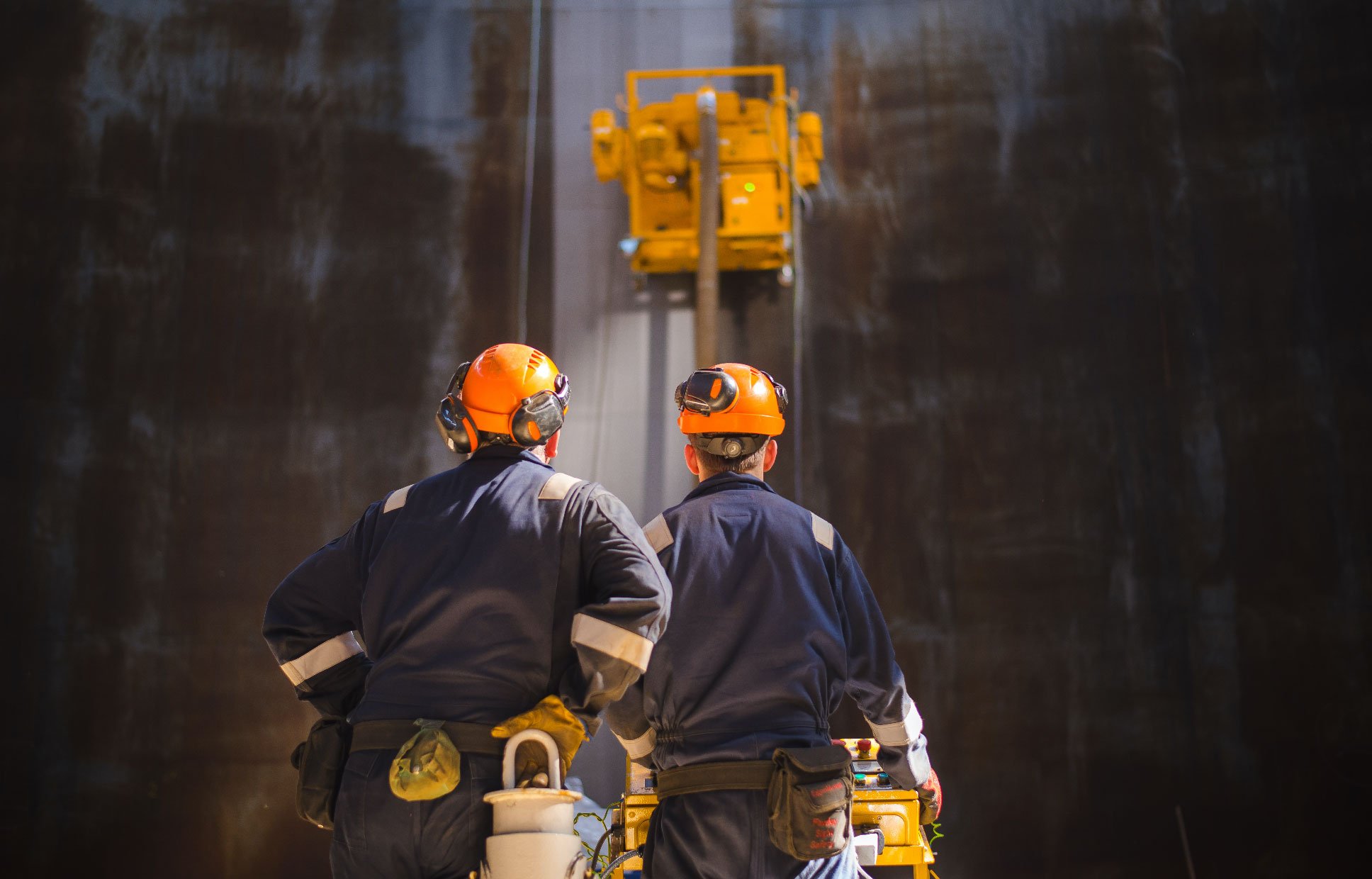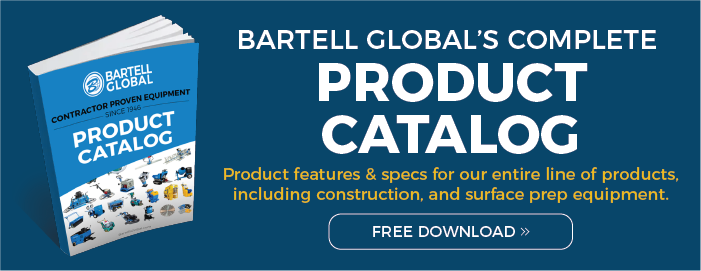I first got involved with diamond blades in 1981 at my Father’s Rental Store. Norton had just introduced laser welding technology which allowed a blade to be run dry. Prior to that, most diamond blades were silver soldered (brazed) and abrasive blades ruled the market. If I remember correctly, the cost of a 14” diamond blade was over $400 and the applications were very specialized. We attempted to rent this expensive blade but time after time the users came back with problems.
Diamond blades were built back then to be used only in specific applications. If there were slight differences in aggregate or hardness, we would need to use a different bond structure. More often than not, the operator did not know the true specifics of the application, and the rental resulted in failure. While just a teenager, I was determined to find a way to make this product work for our company and decided to learn everything I could about diamond blades.
Needless to say, the industry has changed dramatically since then. The bond structure used today is much more forgiving, and costs have dropped as much as 90% over the last thirty years. The lower cost has opened the market to a much larger group of users and subsequently volumes have increased greatly. If you’re a new user of diamond blades, consider yourself lucky that you haven’t gone through the growing pains of the industry. Costs are as low as you will find overall, but there is still a wide range of pricing and quality levels available for you to choose from.
The biggest problem you will find now is trying to determine what makes sense for you to use. Unfortunately, there is no written standard on grading diamond blades. You will find blades labeled as “premium quality” that are really not. In fact, most marketers call their entire product line premium, regardless of true quality.
Bartell offers true blade grading, based on performance. We offer as many as six levels of quality depending on the product type. Our rule is that for every 15% more you spend, you should see a minimum of a 25% increase in performance. Most of our products exceed that rating.
So now that you know many of the quality ratings out there are meaningless, what should you look for in a blade? What’s right for one user probably won’t be the same for others, so let’s break this down by specific requirements. We’ll use 14” blades as the model since that is the highest volume product sold around the world.
A HEAVY USER SHOULD NOT USE INITIAL PRICE AS HIS GUIDE
Many users will look at the initial cost as the primary factor in their purchase. If you plan on making a small amount of cuts and don’t have any further need for the blade, this is the right choice. You want the lowest possible cost associated with the job. What you don’t want is something so cheap it may be dangerous. In reality, a heavy user should not use price as his guide. A higher priced blade will usually yield a much lower cost per foot than an economy blade. For Example;
Cutting 3000psi cured concrete with medium aggregate and #3 rebar these are estimated inch feet for Bartell brand blades by quality (+/- 30% depending on operator and saw):
- 14BSM0.4 – 1000 inch feet Average street price $55 Cost per in/ft - $.055
- 14BSM1.4 – 1500 inch feet Average street price $65 Cost per in/ft - $.043
- 14BSM2.4 – 3000 inch feet Average street price $80 Cost per in/ft - $.026
- 14BSM3.4 – 6000 inch feet Average street price $140 Cost per in/ft - $.023
As you can see your cost per foot drops more than the percentage of increased cost. If you cut often, a higher quality blade will save you on your cost per cut and will usually cut faster as well.
Safety - While a low price might seem like a bargain, it usually is not in the long run. Rule of thumb here is stay away from unmarked product.
If the manufacturer is not willing to put their name on it, you shouldn’t trust it. Look for branded products from reputable suppliers. It won’t necessarily make the price higher, but it will ensure a consistent quality product that the manufacturer will stand behind. Many internet sellers that represent themselves as “factory direct” have no direct contact with any factory. Make sure your supplier is insured in case of any problems. Blades with no markings make it hard to track the supplier.

Applications – The term “general purpose cutting” is thrown around repeatedly and this should not be confused with “combination cutting” or “multi-application cutting”. A general purpose blade usually means the bond is made to cut concrete, masonry block, brick or pavers (our application code 3 or 4). Do not count on this blade for cutting materials at the soft or critically hard end of the spectrum.
You generally will not find a low cost blade to cut all materials. The cost to produce specific application blades is much higher than general purpose
If you want to cut most materials without having to change, you need a true combination blade like our application code “C”. If you cut abrasive materials like asphalt or green concrete with a general purpose blade, it will wear out the blade as much as 70% faster than it would on the materials it was specified for. If you try to cut critically hard materials with a general purpose blade, it will glaze over and stop cutting. If you cut materials on either end of the hardness scale, you should use a blade specific to that application for best results.
Commonly asked questions:
- My guys don’t know how to cut properly, why should I give them a good blade when they will probably just destroy it? This is a question we hear a lot. A better quality blade will usually have a heavier steel core and have superior tension. The fact is that a “throw away” blade will fail much easier than a better quality blade. If your guys are destroying blades, give them something that will handle the abuse better. From a safety standpoint, economy blades in the wrong hands can be very dangerous.
- We cut large amounts of both asphalt and concrete. Does a combination blade make sense? In reality, you will have faster cutting and longer life by changing blades with each application. We often hear that it is impossible to get the operators to stop and change blades. If this is your scenario, a combination blade will keep your costs down overall and reduce the chance of damaging a blade due to misapplication.
- Does the height of the segment matter when it comes to the life of the blade? The answer is yes and no. Many low cost blades offer tall segments to make them look like they will last long. Usually, you will see a bronze look to the segment. This means they have produced a soft bond surrounding the diamond so that it wears quickly. This is necessary because the diamond is low quality and will not last long while cutting. If you compare a high quality blade with a 10mm tall segment, and they exact same quality with a 15mm tall segment, size does matter. Don’t get caught in the size game.
- What does the term inch foot mean? Inch foot means one lineal foot at 1” depth. If you are cutting ten feet at 4” depth you would have a total of 40 inch feet.
So what truly makes a good diamond blade? In reality it’s the best combination of cost, quality, speed and life that fits your needs. Take the time to evaluate what works best for you. Hopefully this might help save you time and money.


 By
By 